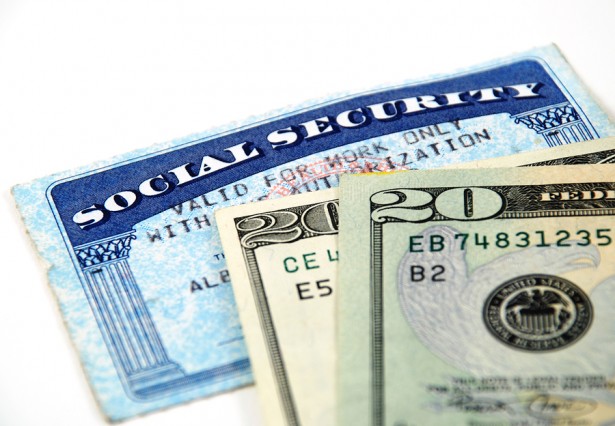More than 60 million Americans receiving a Social Security check will notice an increase in their monthly benefits next year. The Social Security Administration (SSA) announced Wednesday that benefits will increase by just 1.7 percent, or about $22 per month, for the typical Social Security recipient.
For the third consecutive year, Social Security benefit increases will be less than two percent.
The cost-of-living adjustment, otherwise known as COLA, will affect approximately 58 million Americans in January, while adjusted payments for about eight million recipients of Supplemental Security Income will begin Dec. 31.
Annual COLA changes are linked to the consumer price index (CPI), and with the CPI jumping 0.1 percent last month official Bureau of Labor Statistics inflation numbers have remained the same because of low energy prices, though other prices have gone up, particularly food.

Due to the CPI increase, the maximum amount of earnings subjected to the Social Security tax will swell to $118,500 from $117,000. Meanwhile, 10 million workers will pay higher taxes because of the rise in the taxable maximum.
Higher consumer prices
As noted, the CPI rose a tiny 0.1 percent in the month of September after falling 0.2 percent in the previous month.
The Department of Labor’s report on the CPI highlighted that energy prices declined 0.7 percent, which has been due to the significant increase in United States oil production. Overall food prices rose 0.3 percent with meat and dairy products leading the way – meat, poultry and fish prices have gone up between four and 7.5 percent this year. Sugar and sweets also soared 1.6 percent.
Housing (shelter) prices received an uptick of 0.3 percent and are up three percent from the previous year. Medical care services also inched upwards by 0.1 percent and have increased 1.7 percent from the same time a year ago.
Sluggish inflation has been a problem for the Federal Reserve as well as for much of Europe. The U.S. central bank’s target inflation rate is two percent, but inflation has been running below that number for several years now. However, Fed critics argue that wages have remained stagnant and the cost of living has continually risen so inflation could not be tame.
The Fed’s own data suggests inflation has been ascending quite immensely since the year 2000, while other statistics have highlighted the eurozone’s own rising consumer prices since the same time period.

“The truth is, the 50% gap between 2% and 1% inflation is a distinction without a meaningful difference. Indeed, there is no difference at all when it comes to the fundamentals of true economic growth and wealth creation—-except that higher inflation is always slightly worse. Yet due to the unquestioned status of the 2% inflation target, the central banks are getting a free pass in the public debate,” wrote David Stockman, former budget director of the Reagan administration.
“In fact, it is worse than that. They are being postured by their public relations firms in the financial press as fireman at the ready to remedy the very problems they have previously created.”
In the meantime, some Fed officials are calling for the central bank to persist with its current acquisitions of bonds because of low inflation. St. Louis Federal Reserve Bank President James Bullard spoke with CNBC last week and averred that the Fed needs to maintain its monthly bond-buying program to continue attacking the current lethargic inflation.
On news of unexpected rising consumer prices, Treasuries experienced a drop.
The Fed’s next scheduled meeting is Oct. 28 and 29.



